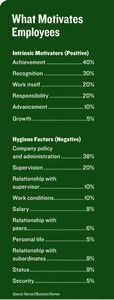Treat Suppliers Like Employees
Whether perusing the business aisle at the neighborhood Barnes & Noble or surfing Amazon.com, I'm shocked by the number of titles focused on leadership. In fact, a quick Amazon search uncovers 223,472 books with "leadership" in the title. We all attend training sessions and seminars, read more than a few of those books and are evaluated against leadership qualities in our performance reviews. And every leadership tome speaks to the criticality of people development: recruit, develop, retain, reward.
As business guru Jack Welch once stated, some 50 percent of his time was focused on people development.1
How does leadership translate into a company's success? In his well-known treatise, author Jim Collins dug into the factors that distinguished good companies from great ones. "The executives who ignited transformations from good to great did not first figure out where to drive the bus and then get people to take it there. No, they first got the right people on the bus (and the wrong people off the bus) and then figured out where to drive it," he wrote.2
Having the right people on the bus means that one's company can more easily adapt to a changing world. The right people are self-motivated to produce outstanding results. But if you have the wrong people, "Great vision without great people is irrelevant."3
So let's continue down this path. If great companies focus on leadership, and part of being great is getting the right people on the bus, how do we keep these superstars from hopping off the bus at a different company? Our HR colleagues remind us of employee engagement factors. In 1968 Frederick Herzberg published "How Do You Motivate Employees" in the Harvard Business Review.4 Herzberg found that the factors that motivate and satisfy employees are not the same things that make them dissatisfied (see table below).
I'll oversimplify: Employees want to achieve great things and be recognized for their work, and they are painfully annoyed by pointless company policies and poor supervision. I surmise that we can all nod in agreement.
Let's take these concepts and replace "employees" with "suppliers." I submit that great companies have the right employees and suppliers on the bus, and both should be managed similarly.
We would not consider people a commodity, but many of us still inadvertently source and manage suppliers as though they are commodities. Do we source suppliers with the same diligence and commitment used when we recruit employees? Do we take responsibility for developing suppliers and making them successful? Do we recognize and reward their achievements? Do we insulate them from low-value policies, procedures and reporting? Probably not — yet we wonder why we don’t always receive superstar performance.

Years ago, at a former company, a division had a serious performance problem with a supplier — let's call it Acorn. Acorn provided an important, customer-facing service, and spend was in the millions. There were serious concerns about service quality, savings achievement and invoicing accuracy. The relationship was volatile, and the same people in the business unit who selected this supplier were on the attack. Threats were lobbed across the conference room table from both sides. Sourcing was asked to step in and replace Acorn. The easy strategy would have been to do that.
Had Acorn been an employee, the business unit manager would have been obligated to implement an individual development plan, or IDP. The manager would have a courageous conversation around performance, the manager and employee would develop an action plan to resolve the issues, and the manager would commit to help the employee fix his or her performance. But in this situation, the business unit rallied around firing the supplier.
My sourcing team was committed to taking a very different approach. A bad hire reflects poorly on a manager, and a bad sourcing event should reflect poorly on the sourcing team. Our first step was to understand the facts, and the situation was clearly different from what we had been told. Acorn was being held to a standard that was different from the contract. Goals were unclear, accomplishments were not being measured and Acorn was in a reporting whirlpool. Both parties were hoping for divorce.
The sourcing team treated Acorn as we would a regular employee, and we placed them on an IDP. We discussed their corporate goals, accountabilities, pain points, barriers and key performance indicators. We committed to work with Acorn and make the relationship work, but they understood that they had 90 days to demonstrate a dramatic turnaround. Acorn committed to receiving the "most improved supplier" award in one year. We joked about this goal, but we signed up to help get them the award.
And how does the story end? Well, budget reductions meant that we did not have a supplier summit that next year; but Acorn would have won not only "most improved," but would have also been a contender for best overall supplier. The sourcing team extended this model to how we worked with our strategic and preferred suppliers — as though they were our own employees. Our strongest performance was always from these suppliers.
As strategic sourcing and supplier management professionals, we can deliver extraordinary value to our companies by leveraging the Collins and Herzberg models with our people and our suppliers. Both groups should be our greatest assets.
Author: Scott Wilkerson is director of sourcing, indirect products and services, for The Clorox Company, Oakland, California.



/https%3A%2F%2Fassets.over-blog.com%2Ft%2Fcedistic%2Fcamera.png)